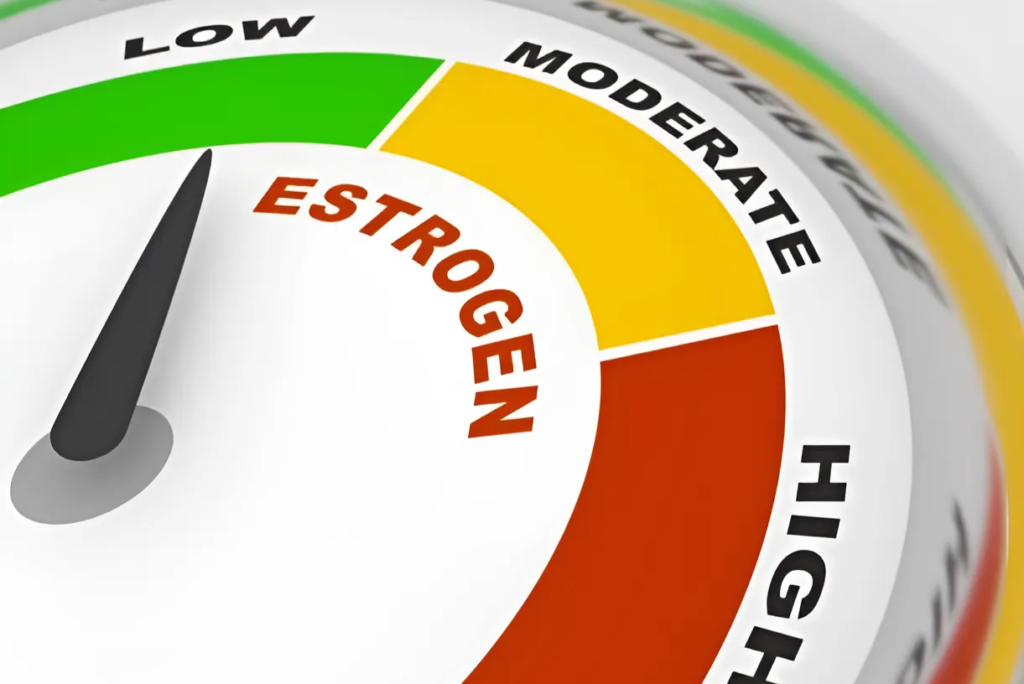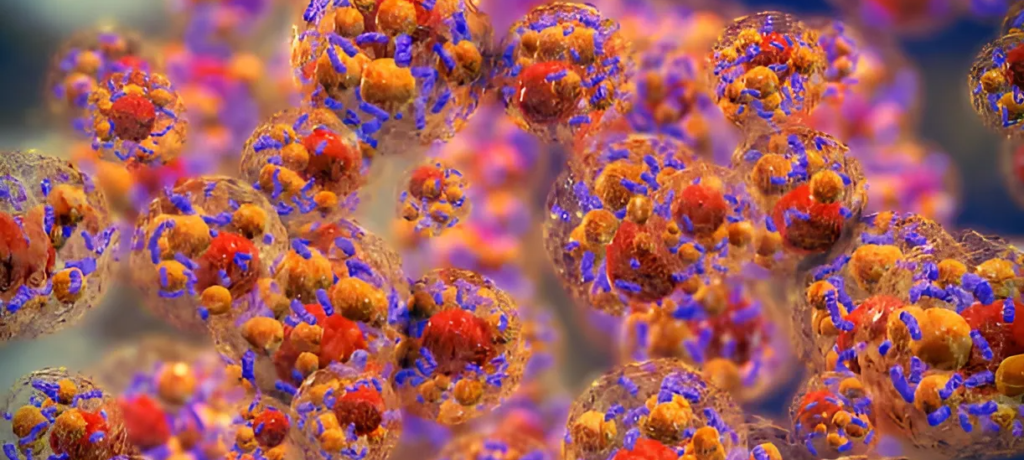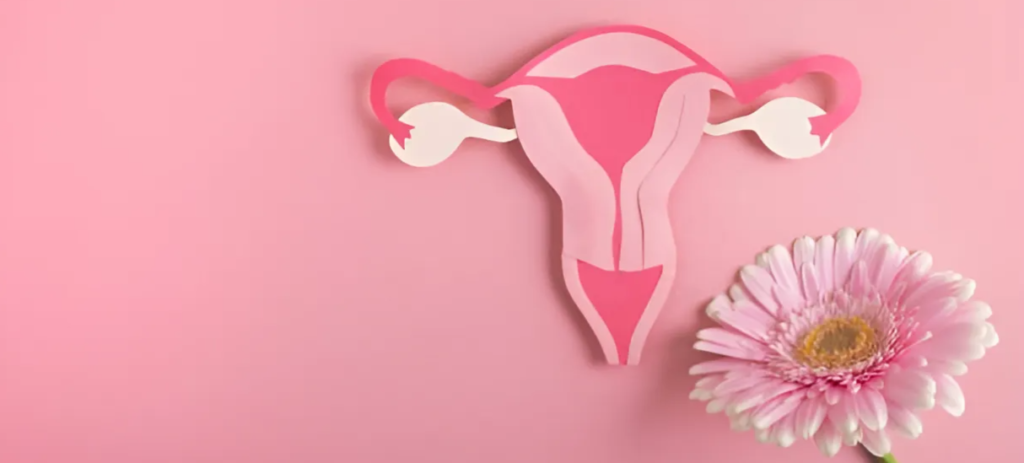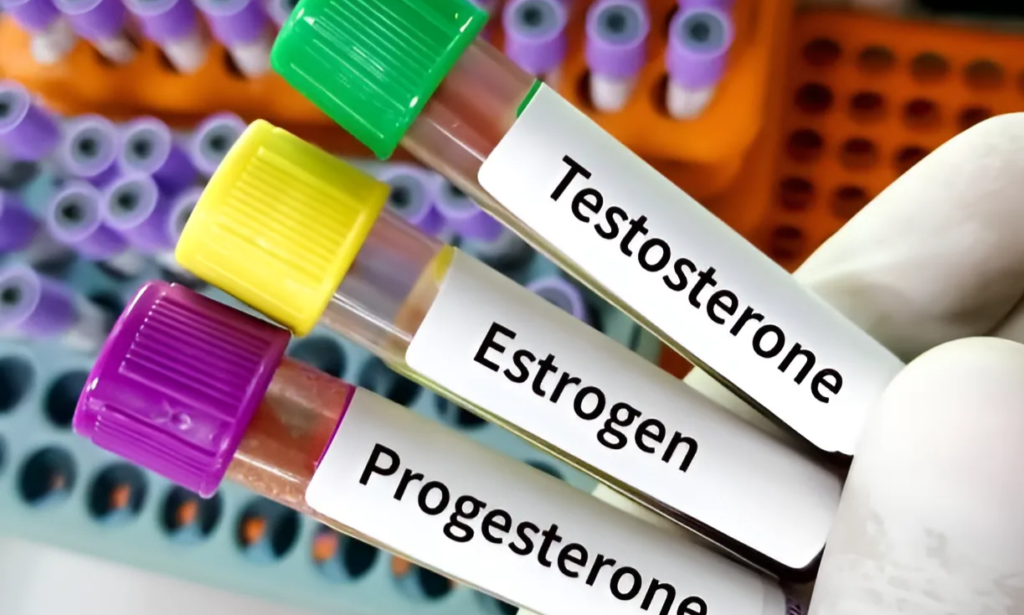Estrogen is a vital hormone present in both males and females, albeit in different concentrations. Often associated primarily with the female reproductive system, estrogen plays a crucial role in various bodily functions beyond just reproduction. In this comprehensive guide, we delve into what estrogen is, its functions, and benefits, and address some frequently asked questions surrounding this important hormone.
What is Estrogen?
Estrogen, a family of steroid hormones, serves as a cornerstone of reproductive and overall health, predominantly emerging from the ovaries in females, yet also finding synthesis in the adrenal glands and, to a lesser degree, in the testes of males. Within this hormone family, estradiol, estrone, and estriol stand as the primary players, each wielding distinct biological effects.
Among these, estradiol reigns supreme as the most potent form, orchestrating crucial physiological processes such as reproductive development, menstrual cycle regulation, and bone health. Despite variations in synthesis and potency, these estrogenic compounds collectively shape the intricate balance of human physiology, influencing everything from reproductive function to cognitive prowess and cardiovascular resilience.
What is Estrogen For?
- Reproductive Development: Estrogen plays a pivotal role in orchestrating the development of secondary sexual characteristics in females during puberty. As levels of estrogen surge, various physical changes occur, including the growth of breast tissue, widening of the hips, and the onset of menstruation. These changes are fundamental aspects of female reproductive development and are largely regulated by estrogen signaling pathways.
- Menstrual Cycle Regulation: Estrogen, in conjunction with other hormones such as progesterone, orchestrates the complex process of the menstrual cycle. During the follicular phase of the cycle, estrogen levels rise, stimulating the growth and thickening of the uterine lining (endometrium). This growth phase is crucial for preparing the uterus to support a potential pregnancy. If fertilization does not occur, estrogen levels decrease, triggering menstruation and the shedding of the uterine lining.
- Bone Health: Estrogen exerts a protective effect on bone density by inhibiting bone resorption, the process by which bone tissue is broken down and reabsorbed into the body. In postmenopausal women, estrogen levels decline significantly, leading to an imbalance between bone formation and resorption and an increased risk of osteoporosis. Estrogen supplementation can help mitigate this risk by maintaining bone density and reducing the incidence of fractures.
- Cardiovascular Health: Estrogen contributes to cardiovascular health through several mechanisms. It helps maintain healthy cholesterol levels by increasing levels of high-density lipoprotein (HDL), or “good” cholesterol, and reducing levels of low-density lipoprotein (LDL), or “bad” cholesterol. Additionally, estrogen promotes vasodilation, or the widening of blood vessels, which improves blood flow and reduces the risk of atherosclerosis, a condition characterized by the buildup of plaque in the arteries.
- Brain Function: Estrogen plays a multifaceted role in brain function, influencing neurotransmitter activity and neuroplasticity. Estrogen receptors are distributed throughout various regions of the brain involved in mood regulation, cognition, and memory. Research suggests that estrogen may modulate neurotransmitter systems such as serotonin, dopamine, and norepinephrine, which are implicated in mood disorders like depression and anxiety. Additionally, estrogen may promote synaptic plasticity, enhancing learning and memory processes.
- Skin Health: Estrogen plays a crucial role in maintaining skin health and vitality. It helps regulate collagen synthesis, the protein responsible for skin elasticity and firmness, as well as hyaluronic acid production, which contributes to skin hydration and volume. As estrogen levels decline with age, collagen production decreases, leading to the formation of wrinkles and sagging skin. Estrogen supplementation can help counteract these effects, promoting a more youthful and radiant complexion.
- Metabolic Function: Estrogen influences various aspects of metabolic function, including glucose metabolism and lipid metabolism. It enhances insulin sensitivity, allowing cells to effectively utilize glucose for energy production and storage. Estrogen also modulates lipid metabolism by promoting the breakdown of triglycerides and inhibiting the synthesis of cholesterol in the liver. Imbalances in estrogen levels, such as those observed during menopause, can disrupt metabolic homeostasis and contribute to conditions like insulin resistance and dyslipidemia.
6 Benefits of Estrogen

1. Relief of Menopausal Symptoms
Menopause marks the end of a woman’s reproductive years, accompanied by a decline in estrogen levels and a range of symptoms such as hot flashes, vaginal dryness, and mood swings. Hormone replacement therapy (HRT), which includes estrogen supplementation, is a widely used treatment option to alleviate these symptoms. Estrogen therapy helps mitigate hot flashes by stabilizing fluctuations in hormone levels, while also restoring vaginal moisture and elasticity to alleviate discomfort and pain during intercourse. Furthermore, estrogen’s influence on neurotransmitter activity can contribute to mood stabilization, reducing irritability and mood swings commonly associated with menopause.
2. Prevention of Osteoporosis
Osteoporosis, characterized by decreased bone density and an increased risk of fractures, is a significant concern for postmenopausal women due to declining estrogen levels. Estrogen plays a crucial role in maintaining bone health by inhibiting bone resorption and promoting bone formation. Estrogen supplementation can help prevent bone loss and reduce the risk of osteoporosis by preserving bone density and strength. By maintaining optimal bone mass, estrogen therapy decreases the likelihood of fractures and enhances overall skeletal health, improving quality of life and reducing morbidity associated with osteoporotic fractures.
3. Cardiovascular Protection
Estrogen’s influence extends beyond reproductive health to cardiovascular protection, particularly in premenopausal women. Estrogen helps maintain cardiovascular health by improving lipid profiles, increasing levels of high-density lipoprotein (HDL) cholesterol, and decreasing levels of low-density lipoprotein (LDL) cholesterol. Additionally, estrogen promotes vasodilation, enhancing blood flow and reducing the risk of atherosclerosis and cardiovascular events such as heart attacks and strokes. By supporting healthy blood vessel function and lipid metabolism, estrogen therapy may lower the risk of cardiovascular disease in premenopausal women, contributing to overall cardiovascular health and longevity.
4. Improved Skin Health
Estrogen plays a vital role in maintaining youthful skin by promoting collagen production, the protein responsible for skin strength and elasticity. As estrogen levels decline with age, collagen synthesis decreases, leading to the formation of wrinkles and sagging skin. Estrogen supplementation can help counteract these effects by stimulating collagen production, restoring skin firmness, and reducing the appearance of fine lines and wrinkles. Additionally, estrogen enhances skin hydration by increasing the production of hyaluronic acid, a key molecule involved in moisture retention. By promoting skin elasticity and hydration, estrogen therapy contributes to a more youthful and radiant complexion, improving overall skin health and appearance.
5. Mood Regulation
Estrogen exerts profound effects on mood regulation through its influence on neurotransmitter activity in the brain. Estrogen receptors are distributed throughout various regions of the brain involved in mood regulation, including the amygdala and hippocampus. Estrogen modulates the activity of neurotransmitters such as serotonin, dopamine, and norepinephrine, which play critical roles in mood regulation and emotional well-being. By enhancing neurotransmitter function, estrogen therapy may alleviate symptoms of depression and anxiety in some individuals, promoting emotional stability and overall mental health.
6. Enhanced Cognitive Function
Emerging research suggests that estrogen may play a protective role against cognitive decline and neurodegenerative diseases such as Alzheimer’s disease in postmenopausal women. Estrogen receptors are abundant in brain regions associated with cognition and memory, including the hippocampus and prefrontal cortex. Estrogen influences synaptic plasticity, the ability of neurons to form and strengthen connections, which is essential for learning and memory processes. Additionally, estrogen may exert antioxidant and anti-inflammatory effects in the brain, protecting against neuronal damage and cognitive decline. Estrogen therapy in postmenopausal women has been associated with improved cognitive function and a reduced risk of Alzheimer’s disease, highlighting its potential role in preserving brain health and cognitive vitality.
Top Estrogen FAQs Answered

# What is Estrogen Dominance?
Estrogen dominance refers to a condition in which estrogen levels are elevated relative to other hormones, particularly progesterone. This imbalance can occur due to various factors such as excessive estrogen production, insufficient progesterone production, or impaired estrogen metabolism. Symptoms of estrogen dominance may include irregular menstrual periods, heavy bleeding, breast tenderness, mood swings, and weight gain. It’s important to address estrogen dominance as it can increase the risk of conditions like fibroids, endometriosis, and breast cancer. Treatment typically involves rebalancing hormone levels through lifestyle changes, dietary adjustments, and sometimes hormone therapy under medical supervision.
# What Causes Low Estrogen?
Low estrogen levels in women can be caused by several factors, including:
Menopause: As women age, ovarian function declines, leading to decreased estrogen production and eventually menopause.
Surgical Menopause: Removal of the ovaries (oophorectomy) during surgery can result in an abrupt decline in estrogen levels.
Hypothalamic or Pituitary Disorders: Conditions affecting the hypothalamus or pituitary gland can disrupt the hormonal signaling cascade that regulates estrogen production.
Extreme Exercise or Low Body Fat: Intense physical activity or low body fat percentage can interfere with hormone production, leading to low estrogen levels.
Chronic Illness or Malnutrition: Certain chronic diseases or nutritional deficiencies can affect ovarian function and estrogen production.

# What Causes Low Estrogen in 20s?
Low estrogen levels in women in their 20s are less common but can still occur due to factors such as:
Polycystic Ovary Syndrome (PCOS): PCOS is a hormonal disorder characterized by irregular menstrual cycles and cysts on the ovaries, which can disrupt estrogen production.
Extreme Dieting or Eating Disorders: Severe calorie restriction or eating disorders like anorexia nervosa can interfere with hormone production and disrupt the menstrual cycle.
Chronic Stress: Prolonged stress can affect the hypothalamic-pituitary-ovarian axis, leading to hormonal imbalances, including low estrogen levels.
Thyroid Disorders: Thyroid dysfunction can impact ovarian function and estrogen production, particularly if left untreated.
Premature Ovarian Failure: In rare cases, women may experience premature ovarian failure, where the ovaries stop functioning before the age of 40, leading to low estrogen levels.
# How to Increase Estrogen Naturally?
To naturally increase estrogen levels, consider the following strategies:
Eat Estrogenic Foods: Include foods rich in phytoestrogens, such as soy products, flaxseeds, lentils, chickpeas, and sesame seeds, in your diet.
Maintain a Healthy Weight: Excess body fat can lead to increased estrogen production, so aim for a healthy weight through balanced nutrition and regular exercise.
Manage Stress: Practice stress-reduction techniques like meditation, yoga, or deep breathing exercises to support hormone balance.
Get Adequate Sleep: Prioritize quality sleep to optimize hormone production and regulation.
Avoid Endocrine Disruptors: Minimize exposure to environmental toxins and endocrine-disrupting chemicals found in plastics, pesticides, and certain personal care products.
# How to Increase Estrogen Levels Quickly?
Increasing estrogen levels quickly is not recommended without medical supervision, as sudden hormonal fluctuations can have adverse effects. However, some approaches that may help support healthy estrogen levels over time include:
Herbal Supplements: Certain herbs like red clover, dong quai, and black cohosh are believed to support estrogen balance, but their efficacy and safety vary, so consult with a healthcare provider before using them.
Dietary Changes: Incorporate estrogenic foods and herbs into your diet as mentioned earlier.
Hormone Replacement Therapy (HRT): In cases of severe estrogen deficiency, hormone therapy prescribed by a healthcare provider can rapidly increase estrogen levels, but it requires careful monitoring and may carry risks.
# What Foods Have Estrogen: Estrogen-Rich Foods?
Several foods contain compounds known as phytoestrogens, which mimic the effects of estrogen in the body. Estrogen-rich foods include:

Soy Products: Tofu, tempeh, edamame, and soy milk are rich sources of phytoestrogens called isoflavones.
Flaxseeds: Flaxseeds are high in lignans, a type of phytoestrogen that may help balance hormone levels.
Sesame Seeds: Sesame seeds contain lignans similar to those found in flaxseeds and may have estrogenic effects.
Legumes: Beans, lentils, and chickpeas contain phytoestrogens and are nutritious additions to the diet.
Fruits: Certain fruits like apricots, oranges, and strawberries contain small amounts of phytoestrogens.
# How to Flush Out Excess Estrogen?
To help eliminate excess estrogen from the body, consider the following approaches:
Eat Fiber-Rich Foods: Fiber helps promote regular bowel movements, which can aid in the excretion of excess estrogen from the body. Include plenty of fruits, vegetables, whole grains, and legumes in your diet.
Stay Hydrated: Drink an adequate amount of water throughout the day to support kidney function and facilitate the elimination of waste products, including excess estrogen.
Limit Alcohol Consumption: Excessive alcohol intake can impair liver function, which is essential for metabolizing and excreting estrogen. Limit alcohol consumption to moderate levels.
Avoid Endocrine Disruptors: Minimize exposure to environmental toxins and endocrine-disrupting chemicals found in plastics, pesticides, and certain personal care products.
Consider Supplements: Certain supplements like calcium d-glucarate and DIM (diindolylmethane) may help support estrogen metabolism and elimination, but consult with a healthcare provider before taking them.
# How to Lower Estrogen?
Lowering estrogen levels should be done under the guidance of a healthcare provider, especially if it involves medical intervention. Depending on the underlying cause of high estrogen levels, treatment options may include:
Hormone Therapy: In cases of estrogen dominance or excess, hormone therapy may be prescribed to rebalance hormone levels. This may involve medications that block estrogen production or promote its metabolism.
Lifestyle Modifications: Adopting a healthy lifestyle, including regular exercise, stress management, and a balanced diet, can support hormone balance and may help lower estrogen levels.
Weight Management: Achieving and maintaining a healthy weight can help reduce excess estrogen levels, as adipose tissue (fat cells) can produce estrogen.
Phytoestrogens: Some herbs and foods containing phytoestrogens may help modulate estrogen levels, but their effects can vary, so consult with a healthcare provider before using them.
Surgery: In cases of estrogen-sensitive cancers or certain conditions like endometriosis, surgical intervention may be necessary to remove estrogen-producing tissues or organs.

# What is Normal Estrogen Level?
Normal estrogen levels can vary depending on factors such as age, gender, and reproductive status. In premenopausal women, normal estrogen levels typically range from 30 to 400 picograms per milliliter (pg/mL) during the menstrual cycle, with levels peaking around ovulation. During menopause, estrogen levels decline, and postmenopausal estrogen levels are usually below 30 pg/mL. In men, normal estrogen levels are much lower, usually below 40 pg/mL.
# How to Balance Estrogen?
Balancing estrogen levels involves addressing both excessive and deficient estrogen states to achieve optimal hormonal equilibrium. Strategies to balance estrogen levels include:
Nutritional Support: Eat a balanced diet rich in fruits, vegetables, whole grains, lean proteins, and healthy fats to support hormone metabolism and balance.
Manage Stress: Practice stress-reduction techniques such as meditation, yoga, or deep breathing exercises to help regulate cortisol levels and support hormone balance.
Maintain a Healthy Weight: Aim for a healthy body weight through regular exercise and a nutritious diet to reduce excess estrogen from adipose tissue.
Avoid Endocrine Disruptors: Minimize exposure to environmental toxins and endocrine-disrupting chemicals found in plastics, pesticides, and certain personal care products.
Hormone Therapy: In cases of hormone imbalances, hormone replacement therapy (HRT) may be prescribed under medical supervision to restore hormonal equilibrium.
# Where is Estrogen Produced?
Estrogen is primarily produced in the ovaries in females, specifically in the ovarian follicles during the reproductive years. Additionally, smaller amounts of estrogen are synthesized in the adrenal glands and, to a lesser extent, in peripheral tissues like adipose tissue (fat cells) and skin. In men, estrogen is produced in the testes in small quantities through the conversion of testosterone by the enzyme aromatase.
# What is Vaginal Estrogen?
Vaginal estrogen refers to estrogen formulations designed for local application in the vagina to alleviate symptoms of vaginal atrophy and dryness, commonly experienced during menopause. Vaginal estrogen can be administered in various forms, including creams, tablets, rings, or suppositories. Unlike systemic hormone therapy, which affects the entire body, vaginal estrogen primarily targets the vaginal tissues, promoting the restoration of vaginal moisture, elasticity, and pH balance.

# What Are the Benefits of Vaginal Estrogen?
The benefits of vaginal estrogen include:
Relief of Vaginal Symptoms: Vaginal estrogen can effectively alleviate symptoms of vaginal atrophy, such as vaginal dryness, itching, burning, and discomfort during intercourse.
Improvement of Vaginal Health: Vaginal estrogen helps restore vaginal moisture, elasticity, and pH balance, promoting overall vaginal health and comfort.
Prevention of Urinary Symptoms: Vaginal estrogen may help reduce urinary symptoms associated with vaginal atrophy, such as urinary urgency, frequency, and recurrent urinary tract infections.
Minimal Systemic Absorption: Compared to systemic hormone therapy, vaginal estrogen has minimal systemic absorption, reducing the risk of systemic side effects like blood clots and breast cancer.
# What is the Lowest Dose of Estrogen for Menopause?
The lowest effective dose of estrogen for menopausal symptoms varies depending on individual factors such as age, symptoms severity, and medical history. Generally, for women with intact uteri (those who have not undergone a hysterectomy), estrogen therapy is combined with progestin to protect the uterine lining from overgrowth and reduce the risk of endometrial cancer. The lowest effective doses of estrogen formulations, whether administered orally, transdermally, or vaginally, are prescribed to alleviate menopausal symptoms while minimizing potential risks associated with hormone therapy.
# What is Considered a High Dose of Estrogen?
A high dose of estrogen is generally defined as a dose that exceeds the standard therapeutic range and poses an increased risk of adverse effects, especially when used long-term. The threshold for what constitutes a high dose of estrogen can vary depending on factors such as the route of administration (oral, transdermal, vaginal), individual tolerance, and the specific estrogen formulation. High-dose estrogen therapy may increase the risk of side effects such as blood clots, stroke, breast cancer, and endometrial hyperplasia, particularly in women with certain risk factors or predisposing conditions.
# How to Apply Estrogen Cream with Finger?
When applying estrogen cream vaginally with your finger, follow these steps:
Wash Hands: Thoroughly wash your hands with soap and water to ensure cleanliness before handling the estrogen cream.
Prepare Applicator: If the estrogen cream comes with an applicator, fill it with the prescribed amount of cream according to your healthcare provider’s instructions.
Assume Position: Lie down, squat, or sit in a comfortable position with your knees bent and legs apart.
Insert Applicator or Finger: Gently insert the applicator or your finger into the vagina as far as it comfortably goes. If using your finger, scoop a small amount of cream (usually about the size of a pea) onto your fingertip.
Apply Cream: With your finger inserted, carefully spread the cream along the walls of the vagina. Ensure thorough coverage of the vaginal tissues.
Dispose of Applicator or Wash Hands: If using an applicator, follow the manufacturer’s instructions for disposal. Otherwise, wash your hands again after application.
Follow Healthcare Provider’s Instructions: Follow any additional instructions provided by your healthcare provider regarding frequency of use and other precautions.
# What is the Difference Between Estrogen and Progesterone?
Estrogen and progesterone are two distinct hormones with different roles in the body, although they often work in tandem to regulate various physiological processes, especially in females. The main differences between estrogen and progesterone include:
- Function: Estrogen primarily regulates the development and function of female reproductive organs, secondary sexual characteristics, and menstrual cycles. Progesterone, on the other hand, prepares the uterus for implantation of a fertilized egg, supports pregnancy, and helps maintain the uterine lining during the menstrual cycle.
- Production: Estrogen is mainly produced in the ovaries (primarily estradiol), although smaller amounts are also synthesized in other tissues like the adrenal glands. Progesterone is produced in the ovaries

# What is the Main Hormone in the Male Reproductive System: Estrogen, Progesterone, Testosterone?
Testosterone is the main hormone in the male reproductive system. It is produced primarily in the testes (by Leydig cells) and in smaller amounts in the adrenal glands. Testosterone plays a central role in the development and maintenance of male reproductive tissues and secondary sexual characteristics, including the development of the penis, testes, and prostate gland, as well as muscle mass, bone density, and facial and body hair growth. While estrogen and progesterone also play important roles in male physiology, testosterone is the primary hormone responsible for male reproductive function and masculinity.


